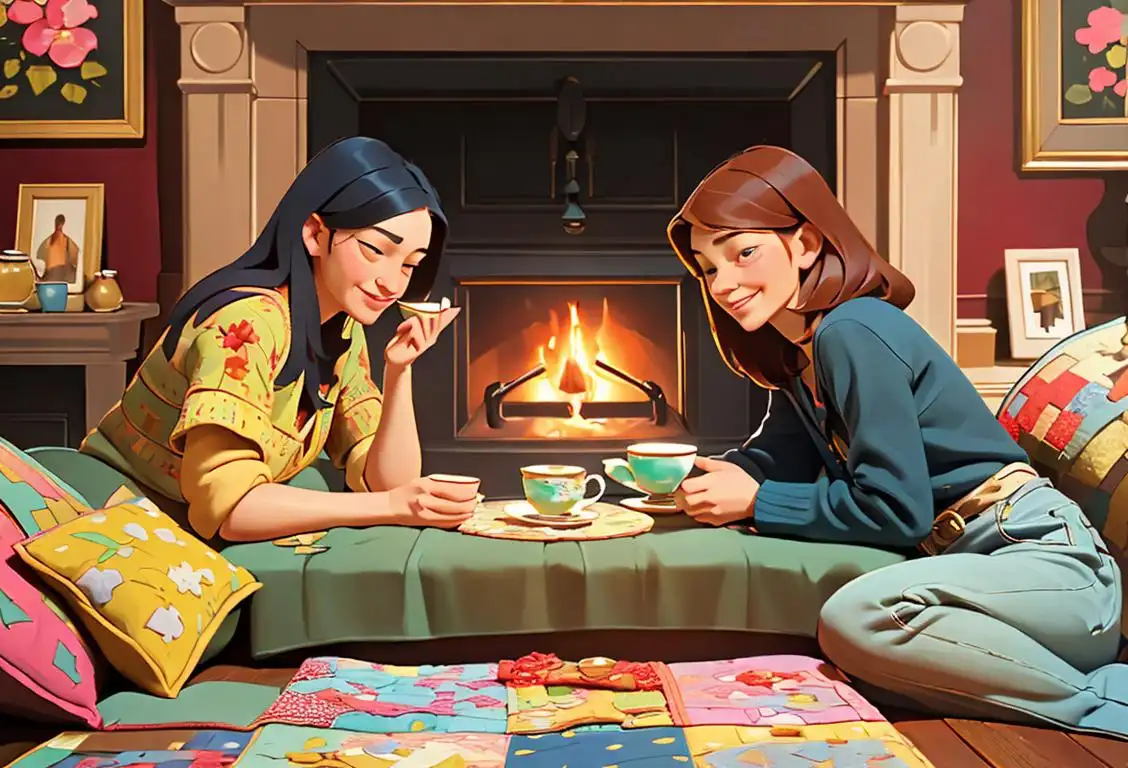National Quilting Day

Hey there, fellow quilting enthusiasts! Grab your sewing needles, colorful fabrics, and maybe even a cup of tea, because National Quilting Day is here to celebrate the art of quilting in all its cozy glory. Whether you're an experienced quilter or a novice with a passion for all things patchwork, this special day is dedicated to honoring the rich history and craftsmanship behind this time-honored tradition.
When is Quilting Day?
It's national quilting day on the 21st March.
The Origins of National Quilting Day
Did you know that National Quilting Day was first proclaimed by President George H.W. Bush on March 21, 1991? That's right! This fabulous fabric-filled celebration has been cherished by quilters all around the United States for nearly three decades. It's a day to appreciate the creativity, skill, and patience that goes into stitching together those beautiful quilted masterpieces.
So why did President Bush decide to dedicate a whole day to quilting? Well, it seems that a group of avid quilters, led by the National Quilting Association, petitioned the President to recognize the importance and artistry of quilting. With their passion and persistence, they convinced him that quilting deserved a special place in the hearts of Americans everywhere.
The Joy of Quilting
Quilting is not just a craft; it's a journey filled with love, warmth, and creativity. From choosing the perfect fabric combinations to carefully piecing and stitching them together, quilting allows us to express ourselves in a colorful and tactile way. It's a tradition that brings generations together, with experienced quilters passing down their knowledge and techniques to the next in line.
Quilts have always held special meaning, serving as cherished heirlooms and symbols of comfort. They can be seen as a labor of love or a form of artistic expression, depending on the eye of the beholder. And let's not forget the joy of snuggling up under a cozy quilt during movie nights or lazy Sundays. It's like being wrapped in a warm hug!
Fun Fact About Quilts
Did you know that the largest quilt ever created measured a whopping 120,800 square feet? That's right, my friend. In 2003, a team of dedicated quilters in the United States pieced together this gigantic quilt, aptly named 'In Full Bloom.' It consisted of 169,000 fabric squares and was created to raise awareness for breast cancer research. Talk about a BIG way to make a statement!
History behind the term 'Quilting'
15th century
The Early Origins
Quilting has its roots in the 15th century when it first emerged in Europe as a practical technique of joining layers of fabric together to create warm, padded clothing and bed coverings. Initially, it was a necessity rather than an art form, with people using scraps of material and thread to sew layers of fabric together. This early form of quilting provided much-needed insulation during cold winters.
17th century
The Influence of India
Quilting underwent a significant transformation in the 17th century with the influence of Indian chintz fabrics. Chintz, a glazed cotton fabric with beautiful floral patterns, captivated Europeans and sparked a quilting renaissance. The popularity of chintz fabrics led to the creation of pieced quilts, where small fabric patches were sewn together to form intricate and visually stunning designs. This marked the beginning of quilting as an artistic expression.
19th century
The Evolution of Quilting Bee
During the 19th century, quilting bees became a popular social activity, particularly in America. These gatherings brought women together to collectively work on quilts, sharing stories, knowledge, and skills. Quilting bees helped foster a sense of community and allowed quilters to exchange ideas and techniques. This period also witnessed the emergence of template quilting, where stencils or paper patterns were used to create intricate quilt designs and motifs.
20th century
Modern Quilting Movements
In the 20th century, quilting experienced various movements that expanded the boundaries of the craft. The Arts and Crafts Movement, with its emphasis on handcrafted items, elevated quilting to an art form. Quilts became increasingly decorative, featuring intricate appliqué, embroidery, and innovative quilting techniques. Additionally, the Quilt revival of the 1970s celebrated quilting as a form of artistic self-expression rather than solely utilitarian. Quilters experimented with fabric choices, colors, and abstract patterns.
21st century
Quilting in the Digital Age
The 21st century witnessed quilting's adaptation to the digital age. Online communities and social media platforms allowed quilters worldwide to connect, share ideas, and showcase their work. Technology also enabled the creation of computerized quilting machines, making the quilting process more efficient and precise. While traditional quilting remains popular, contemporary quilters continue to explore new materials, techniques, and styles, pushing the boundaries of what quilting can be and ensuring its continued evolution.
Did you know?
Did you know that the largest quilt ever created measured a whopping 120,800 square feet? In 2003, a team of dedicated quilters pieced together this gigantic quilt, aptly named 'In Full Bloom,' to raise awareness for breast cancer research.Tagged
awareness fun loved onesFirst identified
12th March 2015Most mentioned on
21st March 2015Total mentions
968Other days
Compliment Day
Cheese Pizza Day
Pumpkin Day
Medal Of Honor Day
Guac Day
Foundation Day
Suicide Prevention Day
Memorial Day
Cancer Survivors Day
Bacon Day









